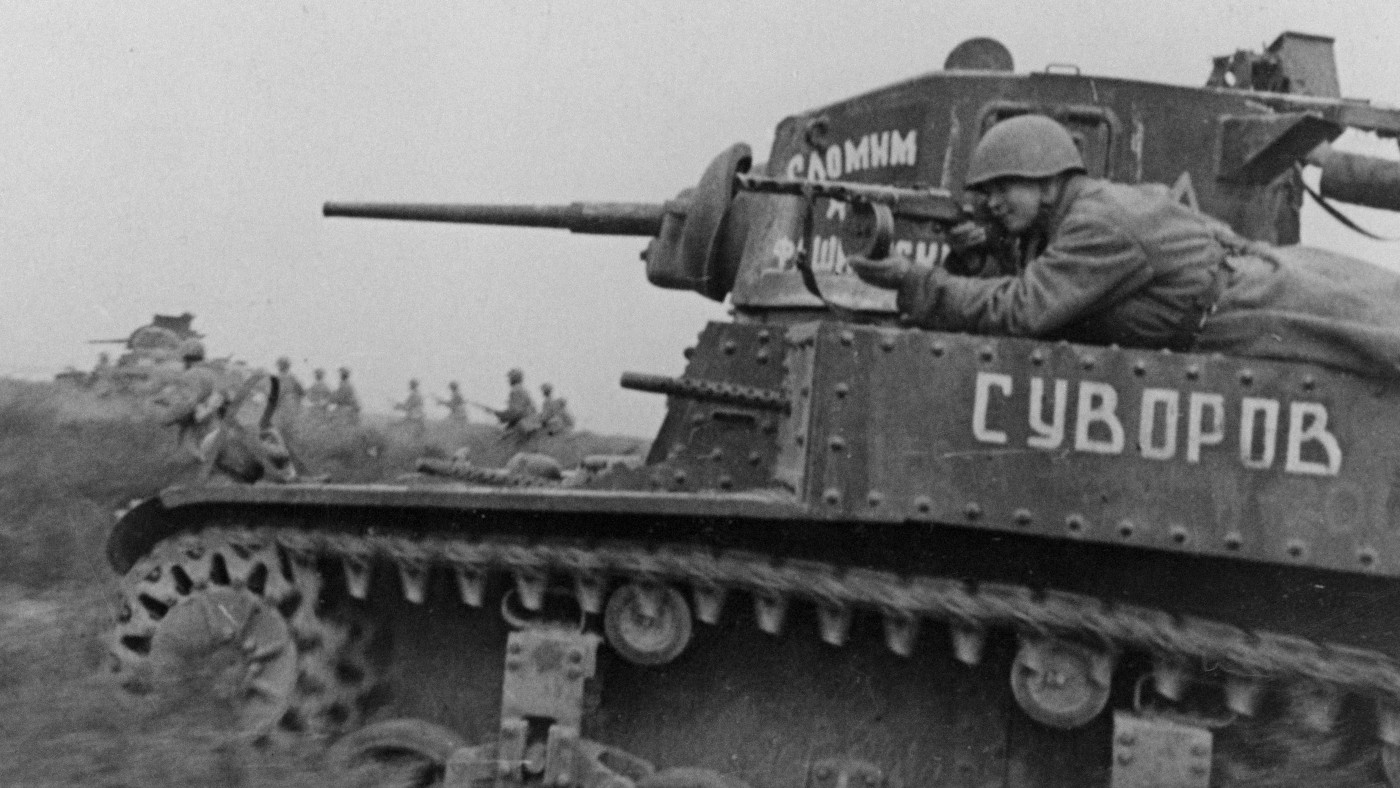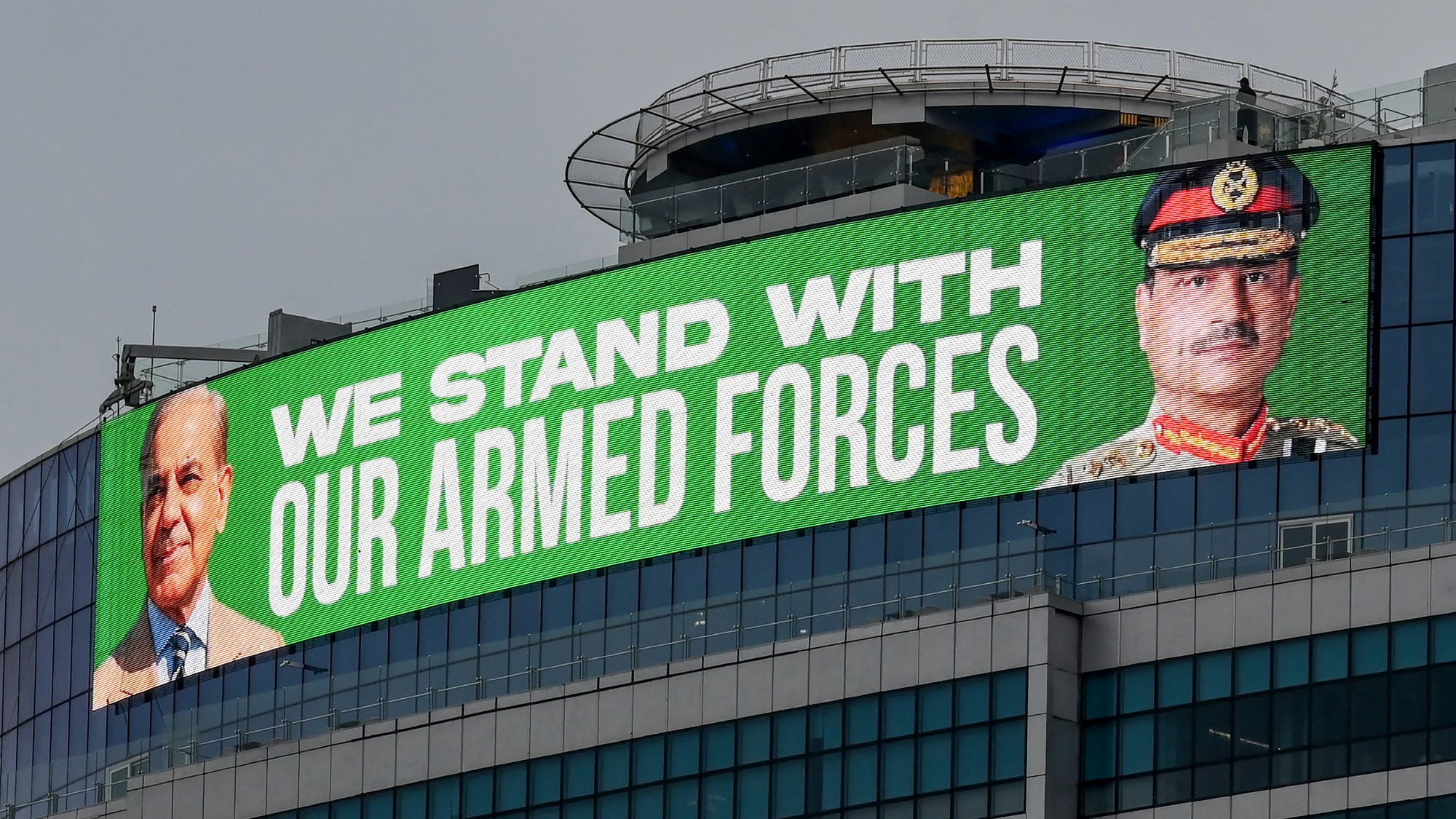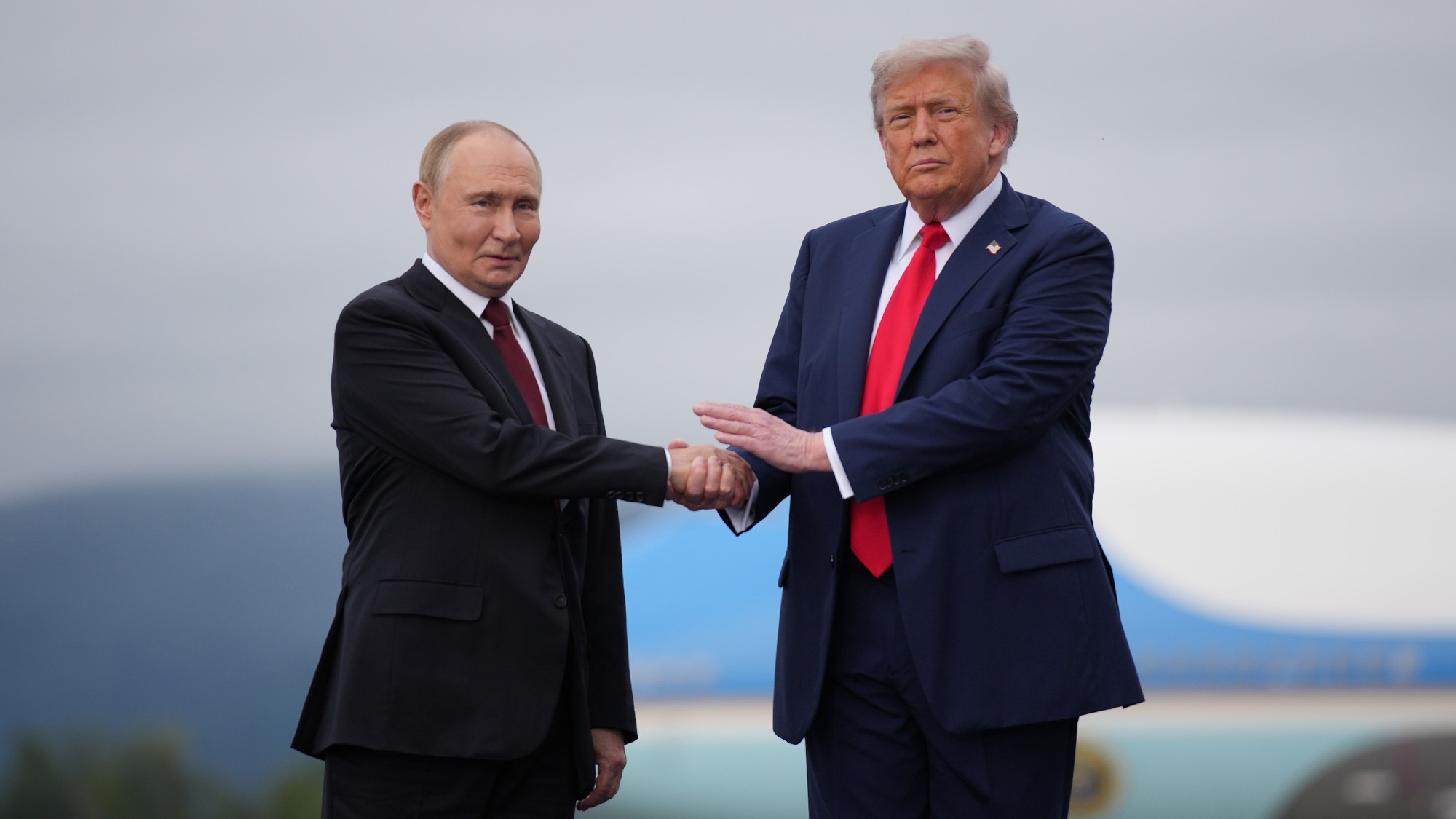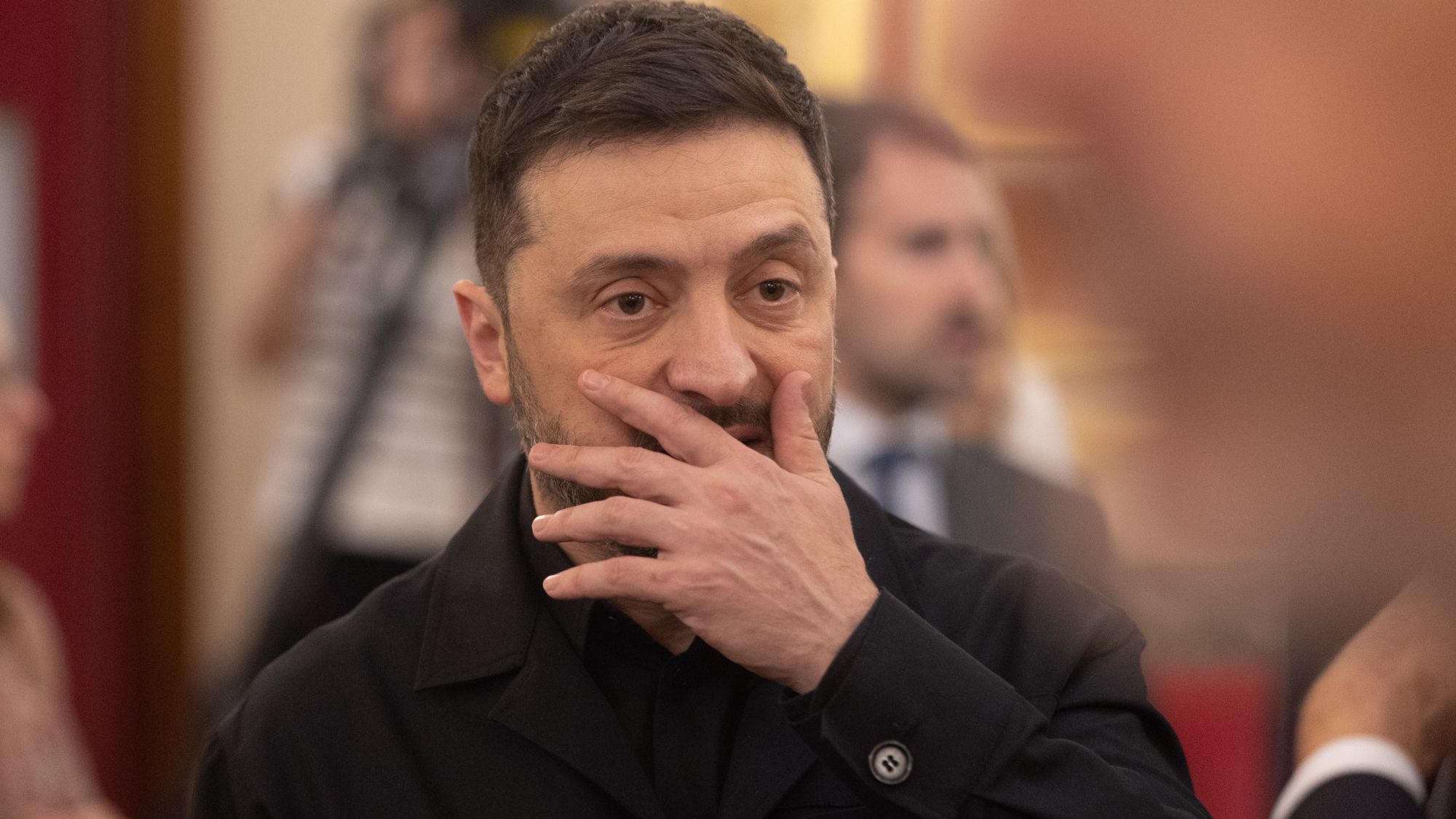The Battle of Stalingrad 80 years on
Battle that turned the tide of Second World War remains a powerful symbol of patriotism in Russia

Eighty years after it ended, the Battle of Stalingrad remains a byword for the horror of modern warfare.
The battle which turned the tide of the Second World War 80 years ago when German forces capitulated to the Red Army, “remains a powerful symbol of patriotism in Russia as it presses its war in Ukraine”, said RTE.
President Vladimir Putin “has suggested that he would not oppose renaming Volgograd to Stalingrad if its residents supported the move”, said the Moscow Times. But currently “two-thirds of residents in the Russian city of Volgograd oppose permanently renaming their city”, the paper added.
The Week
Escape your echo chamber. Get the facts behind the news, plus analysis from multiple perspectives.

Sign up for The Week's Free Newsletters
From our morning news briefing to a weekly Good News Newsletter, get the best of The Week delivered directly to your inbox.
From our morning news briefing to a weekly Good News Newsletter, get the best of The Week delivered directly to your inbox.
Why is the battle so important?
The Battle of Stalingrad was the bloodiest of the Second World War, and by some measures the bloodiest in human history. For five months, from September 1942 to February 1943, Soviet and German troops fought each other street by street, building by building, even room by room in and around the city in southwestern Russia. Some four million combatants were involved, and the casualties were staggering. The Soviets recovered the corpses of 250,000 Axis soldiers afterwards. In total, an estimated 1.1 million Red Army soldiers were killed, wounded, missing or captured; on the Axis side, the number is estimated at around 800,000. Some 40,000 civilians were also killed. Germany’s eventual and disastrous defeat represented a crucial turning point on the Eastern Front and in the course of the War: it marked the beginning of the end for Nazi Germany.
Why did Hitler target Stalingrad?
By the early summer of 1942, Hitler’s domination of Europe was near its peak, stretching from the Atlantic coast to Scandinavia, from the Baltic states to Greece. In the Soviet Union, German forces had conquered Ukraine and were besieging Leningrad. They had, though, been pushed back from Moscow by fierce Red Army resistance in the autumn of 1941. Operation Blue, launched in June 1942, was designed to collapse the Soviet war effort by seizing its vital oilfields in the Caucasus (Hitler’s forces also badly needed oil). However, Hitler chose to divide his forces in southern Russia, to also capture Stalingrad, a long, thin industrial city of about half-a-million people that ran along the Volga River. This was, in part, a strategic target, because taking it would cut Soviet transport links and destroy armaments factories. But it was also a symbolic mission: Hitler wanted to take the city, and Stalin was equally determined to defend it; it had been named after him to commemorate his role in defending it during Russia’s civil war.
How did the attack begin?
Hitler ordered one of Germany’s best units, the Sixth Army, to take the city, supported by the Fourth Panzer Army. It was led by General Friedrich von Paulus, a fine strategist but an inexperienced combat leader. By mid-August, Paulus’s troops were nearing the outskirts of Stalingrad and, on 23 August, the Luftwaffe began an indiscriminate assault, dropping more than 1,000 tonnes of bombs on Stalingrad, turning much of the city to rubble and killing some 25,000 civilians. Within weeks, the first German troops had reached the Volga, splitting the city. However, Stalin’s Order No. 227, issued in late July, had been clear, declaring: “Not a step back!”. General Vasily Chuikov, who was given command of the city’s main defending force, the 62nd Army, on 11 September, explained his plan: “We will hold the city or die there.”
What did Chuikov do?
Chuikov, a dogged Red Army veteran, realised that the devastation left by the Luftwaffe gave his men cover by which to ambush the Germans, and ordered them to “hug” the enemy so close that it was hard for their planes and artillery to operate. “Every German soldier must be made to feel that he is living under the muzzle of a Russian gun,” he said.
A free daily email with the biggest news stories of the day – and the best features from TheWeek.com
Soldiers fought hand to hand in streets, in buildings, even in sewers, in what the Germans described as a Rattenkrieg: a “rat war”. Corpses from both sides soon littered the ground, “rotting, unwanted”, wrote Private V.I. Kovalenko, a Red Army soldier, in a letter home. “Tanks drive over dead bodies as if they were logs of wood. It’s a horror to see.” The strategy made German advances vastly costly, though by mid-November they had taken some 90% of Stalingrad, and had pushed the Soviets back to a thin strip of land along the Volga. But then came Operation Uranus.
What was Operation Uranus?
On 19 November, the Soviets, having assembled three complete armies near Stalingrad, launched one of the most formidable counter-attacks in modern history. Two separate assaults were launched at the flanks of the attacking force, on the open steppes about 50 miles north and south of Stalingrad, which were largely guarded by weaker Romanian, Italian and Hungarian units. German intelligence had no idea that the Soviets had such manpower or hardware to call upon. And within four days, up to 300,000 Germans had been completely encircled in and around Stalingrad, in what became known as der Kessel – “the cauldron”.
How did Paulus respond?
Paulus asked Hitler if he could break out of the encirclement, but was ordered to “stand and fight”. The plan was that the Luftwaffe would resupply the Sixth Army by air; but airlifts into the Kessel were inadequate, and a later German attempt to rescue the army, led by Field Marshal Erich von Manstein, ended in failure when Hitler again did not allow Paulus to retreat. His soldiers – surrounded, running out of ammunition and food, and in winter conditions of -10°C or -20°C – were left to fend for themselves. Speakers blared Russian propaganda through the city: “Every seven seconds, a German soldier dies.”
How did the battle end?
On 10 January, the Soviets began their final attack on the city. Some Germans escaped by boarding planes that took off from the two runways inside the Kessel, but the airfields were overrun. Survivors were chased into Stalingrad. Among them was Paulus, whom Hitler had promoted to Field Marshal, to encourage him into a glorious suicide. Paulus declined and surrendered on 31 January, followed by 22 generals and 91,000 remaining soldiers (of whom only about 5,000 would return to Germany). Two days later the battle ended, bringing five months of brutal fighting to an end with a crushing defeat for the Nazis. The BBC’s Alexander Werth said he could only see one house standing “in a town the size of Manchester”.
-
 US citizens are carrying passports amid ICE fears
US citizens are carrying passports amid ICE fearsThe Explainer ‘You do what you have to do to avoid problems,’ one person told The Guardian
-
 All roads to Ukraine-Russia peace run through Donetsk
All roads to Ukraine-Russia peace run through DonetskIN THE SPOTLIGHT Volodymyr Zelenskyy is floating a major concession on one of the thorniest issues in the complex negotiations between Ukraine and Russia
-
 Why is Trump killing off clean energy?
Why is Trump killing off clean energy?Today's Big Question The president halts offshore wind farm construction
-
 How Bulgaria’s government fell amid mass protests
How Bulgaria’s government fell amid mass protestsThe Explainer The country’s prime minister resigned as part of the fallout
-
 Pakistan: Trump’s ‘favourite field marshal’ takes charge
Pakistan: Trump’s ‘favourite field marshal’ takes chargeIn the Spotlight Asim Munir’s control over all three branches of Pakistan’s military gives him ‘sweeping powers’ – and almost unlimited freedom to use them
-
 Pushing for peace: is Trump appeasing Moscow?
Pushing for peace: is Trump appeasing Moscow?In Depth European leaders succeeded in bringing themselves in from the cold and softening Moscow’s terms, but Kyiv still faces an unenviable choice
-
 Femicide: Italy’s newest crime
Femicide: Italy’s newest crimeThe Explainer Landmark law to criminalise murder of a woman as an ‘act of hatred’ or ‘subjugation’ but critics say Italy is still deeply patriarchal
-
 Brazil’s Bolsonaro behind bars after appeals run out
Brazil’s Bolsonaro behind bars after appeals run outSpeed Read He will serve 27 years in prison
-
 The $100mn scandal undermining Volodymyr Zelenskyy
The $100mn scandal undermining Volodymyr ZelenskyyIn the Spotlight As Russia continues to vent its military aggression on Ukraine, ‘corruption scandals are weakening the domestic front’
-
 Americans traveling abroad face renewed criticism in the Trump era
Americans traveling abroad face renewed criticism in the Trump eraThe Explainer Some of Trump’s behavior has Americans being questioned
-
 Massacre in Darfur: the world looked the other way
Massacre in Darfur: the world looked the other wayTalking Point Atrocities in El Fasher follow decades of repression of Sudan’s black African population